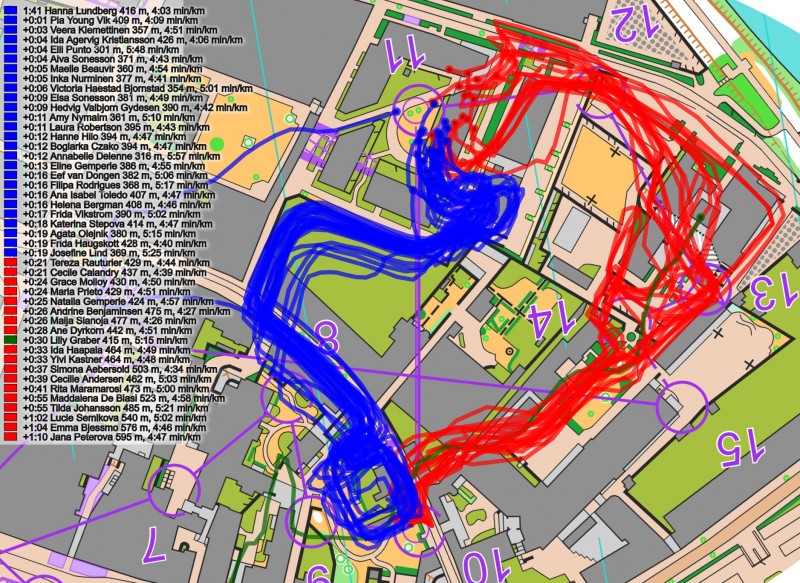
Pia Young Vik (Norway) and Barros Vallet (France) won surprise gold medals when the 2025 European Orienteering Championships (EOC) concluded on Sunday with thrilling individual sprint finals in Lier, Belgium. Some tricky long route choices challenged the pre-race favourites – with many runners losing significant time.
France’s Mathias Barros Vallet produced the performance of his career to win his first major international title, defeating Norway’s strong sprint duo of Kasper Harlem Fosser (silver) and Eirik Langedal Breivik (bronze). In the women’s class, Norway’s Pia Young Vik, 22, claimed her first major individual title by just three seconds over Sweden’s Hanna Lundberg in one of the closest sprint finals in recent memory. Finland’s Inka Nurminen took bronze, also winning her first individual international championship medal.
Young Vik with close-to-perfect race
The race was decided in the final stages, with Young Vik making up ground after being fourth at the arena passage. “I ran almost completely without mistakes. There’s only one place where I went up some stairs too late – where I lost a couple of seconds,” Young Vik told the Norwegian Orienteering Federation. “But I didn’t think I would be able to win.”
Lundberg, who had led for most of the race, was philosophical about the narrow defeat. “I’m very proud that I managed to hold it together today,” the Swedish runner said, according to the Swedish federation coverage. The silver medal came as redemption for Lundberg after a disappointing relay performance earlier in the week where she had been dropped on the final leg.
Switzerland’s Simona Aebersold looked set for gold at the halfway point but made crucial mistakes, particularly at control 11, dropping her to fifth place. “I am very disappointed with my race. After concentrating on the forest disciplines for several months, I lack the technical security in sprint orienteering and I make too many mistakes,” Aebersold explained to Swiss Orienteering.
Sweden’s women delivered an outstanding team performance with three athletes in the top six. Alva Sonesson finished fourth, just four seconds from bronze, while veteran Helena Bergman impressed with sixth place in her comeback.
“I’m very satisfied with the race. That I could run so well and hold it together is good, but it stings a little when it was so close,” said Sonesson, according to the Swedish Federation.
Breakthrough for Barros Vallet
Barros Vallet was three seconds behind Fosser at the arena passage but produced a fantastic final loop, gaining 15 seconds on the Norwegian at control 14 to secure a nine-second victory. The result was a massive breakthrough for the Frenchman, whose previous best international result was 10th at a World Cup sprint.
Norway’s silver and bronze medalists came directly from forest success at the World Orienteering Championships in Finland this summer – and were very happy to be competitive also on the urban scene.
“It’s a big boost,” said Fosser to the Norwegian federation. “When I came down here, I didn’t think I could fight for a medal, and getting silver is very good.” However, the world long-distance champion admitted some frustration: “Of course it’s a bit annoying when I see that I lose quite a bit on a route choice towards the end.”
Breivik, the world middle-distance champion, was equally pleased with his bronze medal performance, saying he “hadn’t dared to believe” in a medal when he finished.
In contrast to their women’s success, Sweden’s men had a disappointing day. Jonatan Gustafsson was their best finisher in 10th place, 37 seconds behind the winner.
“It’s a bit sad that I’m the best Swede in tenth place. Absolutely. We have to analyze this and see what we can do better,” Gustafsson said according to Swedish coverage.
World champion Martin Regborn had a particularly frustrating race, running into a dead end and losing 15-20 seconds, which cost him his focus for the remainder of the course.
Analysis Men
Below you can see a graphical split time analysis of the men’s race for the top 6 athletes – with further athletes included further below. The first comparison is against the leader (a flat curve means the same pace as the leader) while the second comparison is against “superman” (a flat curve means the same pace as the fastest on each leg).
From the analysis chart – combined with trying to analyze the GPS-data – it is clear that there were significant route choice challenges here. Notably very few runners found the ideal route to control 14 – of the top 6 only the winner Mathias Barros Vallet succeeded 100% on this leg, beating most of the others with 10-15 seconds or more. Other challenging legs where the long leg to the 8th control where Kasper Fosser ran a fantastic leg whereas others – notably home favourite Yannick Michiels – lost nearly 15 seconds on a non-optimal route choice. But also other legs gave significant time losses among the top 6: For example the leg to the 2nd control (Tim Robertson), the leg to the 7th control (Eirik Langedal Breivik) and the long leg to the 19th control (Barros Vallet and Tim Robertson).
Looking at the superman-chart below, it is clear that Barros Vallet had a fantastic period from control 8 to control 14, while Harlem Fosser had en equally fantastic period from control 14 to 19.
When we include more of the pre-race favourites in the analysis, it is very clear that it was the 14th control that crushed most dreams today, with 6-8 runners in the battle for the medals lost their opportunities by losing 20-30 seconds (Hadorn, Aebersold, Rauturier, Street, Regborn and Ruohola, among others). Note also pre-race favourite Tuomas Heikkila’s (Finland) big fall to control 19, where he loses nearly a minute falls a long way from his 2nd place to
Feel free to view the course in a simple map-viewer where you can rotate the legs or take a look at the GPS-tracking before looking at the route choice options below.
The first leg of interest is the leg to control 2 – here you can lose quite a lot of time by going the longer route to the left (Robertson, Michiels, Bejmer), or taking the straight variant which has some stairs and narrow passages embedded (Barrot Vallet, Ruhola).
See also the leg with route alternatives including length in meters per alternative – thanks a lot to Matthieu Puech for sharing this part of his preparation for the TV-broadcast as commentor for French TV.
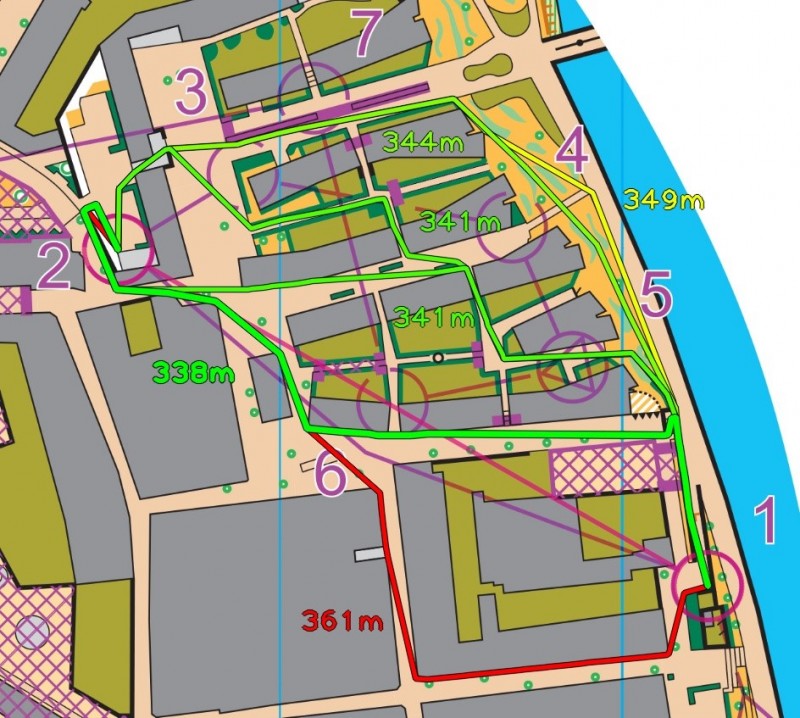
The leg to the 6th control is also a bit interesting. This one comes directly after a map exchange, and from the GPS-data it is very clear that right is faster. Some top runners like Michiels (5 seconds lost, fastest on the left route), Regborn, Aebersold, Heikkila and Bejmer lost 7 – 15 seconds by running left.
The next leg of interest is the leg to control 8. Here the variants to the left were slower. However, this was also a lot about running speed, with pre-race favourite Heikkila being only 5 seconds behind in 3rd best time and winner Barros Vallet 8 seconds behind on the slower route to the left. Notably Fosser won the leg wtih 3 seconds on the route to the right.
Looking at the route lengths, the variant chosen by Heikkila is clearly longer, but with a possibility for fast running on wide roads.
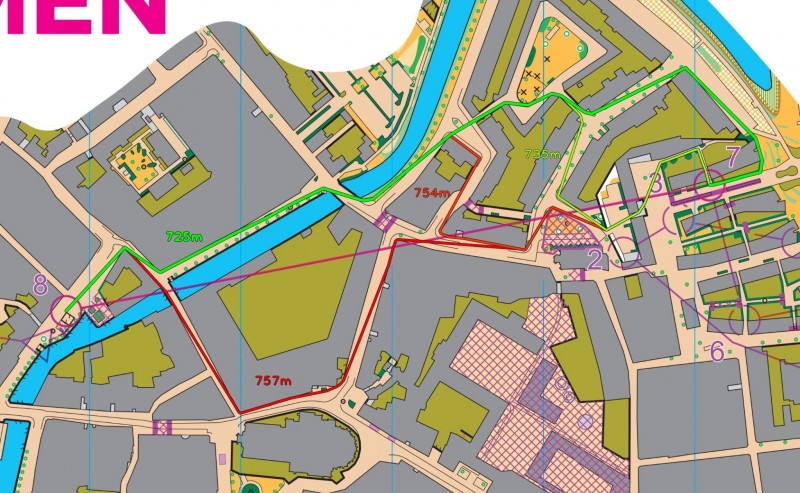
The last leg we take a look at is the leg to control 14. In this part of the course the GPS-data is quitevery difficult to understand. We have to look at Matthieu Puech’s route choice variants below to understand what is happening here. Basically you can find a S-shaped route straight which is nearly 10% shorter than running around to the right – and it also includes less complex running.
Finally a quick look at the 19th control where Heikkila lost his medal towards the very end of the race. He somehow got completely lost on a route to the right.
For completeness, here are Matthieu Puech’s annotated legs for all of the legs in the men’s course (they were only prepared for the men’s race as the challenging legs where mostly the same in the men’s and women’s course).
Analysis Women
The women had a very similar course to the men – just a shorter loop in the start. Looking at the splits browser from the women’s course, it is clear that Simona Aebersold was on the way towards a gold medal before she took the wrong route choice to the 11th control (the same leg as the men’s 14th control), losing nearly 40 seconds, and going from a clear lead to a 6th place. In the battle for victory, Lundberg and Young Vik did very similar races, but Young Vik was faster on the leg to the 16th control, and decided the race there. She didn’t have the best start – taking a wrong route to the second control – but from there on the Norwegian ran an excellent race.
Including more women in the analysis, we see several runners taking the wrong route to control 11 (there are even more who lose a lot of time here when looking further down the results). Notably Natalia Gemperle was equal on time with Young Vik before taking the wrong routechoice to the 14th control, losing 25 seconds on the leg.
Here is a corresponding comparison against superman, where we can clearly see Aebersold’s fantastic period from leg 4 to leg 10, and Young Viks great period from control 10 to 16.
Finally we include some additional runners losing significant time in the latter parts of the race: Victoria Haestad Bjørnstad, Andrine Benjaminsen, Grace Molloy and Eef van Dongen were all in the battle for medals before they made their route choice misses.
You can view the course in a simple map-viewer where you can rotate the legs before looking at the route choice options below.
Starting with leg 2, we see very clearly how left and right is slower to control 2, with Young Vik running right and losing 8 seconds.
Control 3 is a short leg where right is clearly slower – notably Aebersold takes the wrong route here and loses 4 seconds and von Dongen loses 7 seconds on this route.
The long leg to control 5 is the same as the men had, with right being clearly fastest. Natalia Gemperle (+8 seconds), Rauturier (+15 seconds) and Sonesson (+15 seconds) lose significant time by running to the left.
The leg to control 11 was even more polarizing in the women’s class. Everybody in the final who run to the left are faster than everybody running to the right – that is not often we see. Rauturier is fastest of the ones running to the right, losing 21 seconds. Aebersold gets lost in the multi-level area on the route to the right and loses 37 seconds.
Finally a few legs where some notably runners lost time.
Maps and GPS-tracking
Click the below images to replay the GPS-tracking:
EOC 2025 | Sprint Final | Men

» See map in omaps.worldofo.com
EOC 2025 | Sprint Final | Women

» See map in omaps.worldofo.com
See below for the course maps:
Results
Men
| 1 | Mathias Barros Vallet | 13:39 | 3:15 | |||
| 2 | Kasper Harlem Fosser | 13:48 | +0:09 | 3:18 | ||
| 3 | Eirik Langedal Breivik | 13:57 | +0:18 | 3:20 | ||
| 4 | Jakub Glonek | 13:58 | +0:19 | 3:20 | ||
| 4 | Yannick Michiels | 13:58 | +0:19 | 3:20 | ||
| 6 | Tim Robertson | 14:01 | +0:22 | 3:21 | ||
| 7 | Guilhem Verove | 14:05 | +0:26 | 3:22 | ||
| 8 | Tino Polsini | 14:07 | +0:28 | 3:22 | ||
| 9 | Jorgen Baklid | 14:12 | +0:33 | 3:23 | ||
| 10 | Jonatan Gustafsson | 14:16 | +0:37 | 3:24 | ||
| 11 | Jonas Hubacek | 14:22 | +0:43 | 3:26 | ||
| 11 | Teemu Oksanen | 14:22 | +0:43 | 3:26 | ||
| 13 | Michal Olejnik | 14:24 | +0:45 | 3:26 | ||
| 13 | Max Peter Bejmer | 14:24 | +0:45 | 3:26 | ||
| 15 | Nathan Lawson | 14:32 | +0:53 | 3:28 | ||
| 15 | Wouter Hus | 14:32 | +0:53 | 3:28 | ||
| 17 | Tomas Krivda | 14:34 | +0:55 | 3:29 | ||
| 17 | Martin Hubmann | 14:34 | +0:55 | 3:29 | ||
| 19 | Joey Hadorn | 14:38 | +0:59 | 3:30 | ||
| 19 | Jurgen Joonas | 14:38 | +0:59 | 3:30 |
Women
| 1 | Pia Young Vik | 13:59 | 3:47 | |||
| 2 | Hanna Lundberg | 14:02 | +0:03 | 3:48 | ||
| 3 | Inka Nurminen | 14:16 | +0:17 | 3:51 | ||
| 4 | Alva Sonesson | 14:20 | +0:21 | 3:53 | ||
| 5 | Simona Aebersold | 14:22 | +0:23 | 3:53 | ||
| 6 | Helena Bergman | 14:29 | +0:30 | 3:55 | ||
| 7 | Maelle Beauvir | 14:32 | +0:33 | 3:56 | ||
| 8 | Veera Klemettinen | 14:35 | +0:36 | 3:57 | ||
| 8 | Natalia Gemperle | 14:35 | +0:36 | 3:57 | ||
| 10 | Ida Agervig Kristiansson | 14:36 | +0:37 | 3:57 | ||
| 11 | Tereza Rauturier | 14:37 | +0:38 | 3:57 | ||
| 12 | Andrine Benjaminsen | 14:38 | +0:39 | 3:57 | ||
| 12 | Victoria Haestad Bjornstad | 14:38 | +0:39 | 3:57 | ||
| 14 | Grace Molloy | 14:39 | +0:40 | 3:58 | ||
| 15 | Elsa Sonesson | 14:44 | +0:45 | 3:59 | ||
| 16 | Cecile Calandry | 14:48 | +0:49 | 4:00 | ||
| 17 | Maija Sianoja | 14:49 | +0:50 | 4:00 | ||
| 18 | Maria Prieto | 14:52 | +0:53 | 4:01 | ||
| 18 | Amy Nymalm | 14:52 | +0:53 | 4:01 | ||
| 20 | Elli Punto | 14:53 | +0:54 | 4:02 |
 World of O News
World of O News


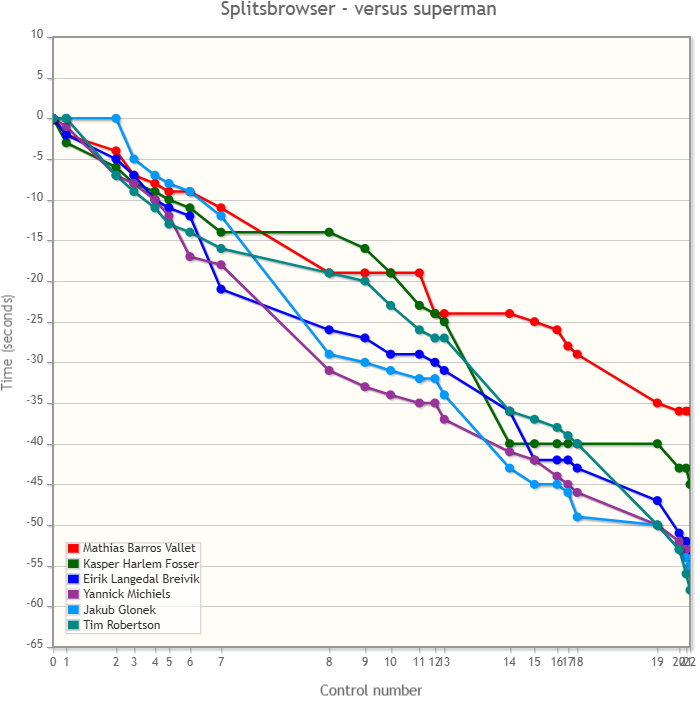
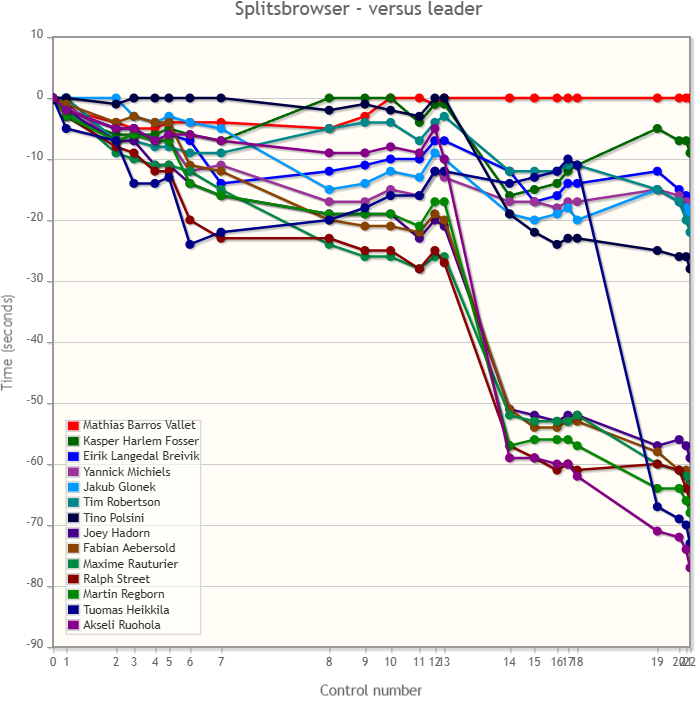
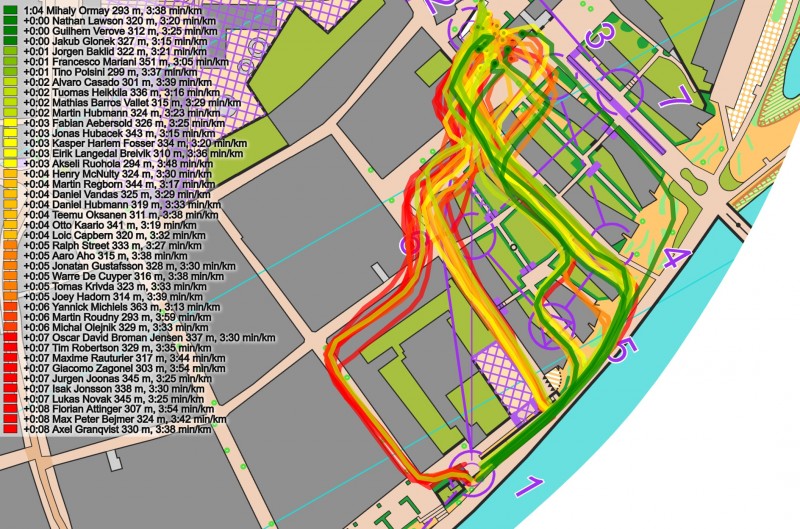
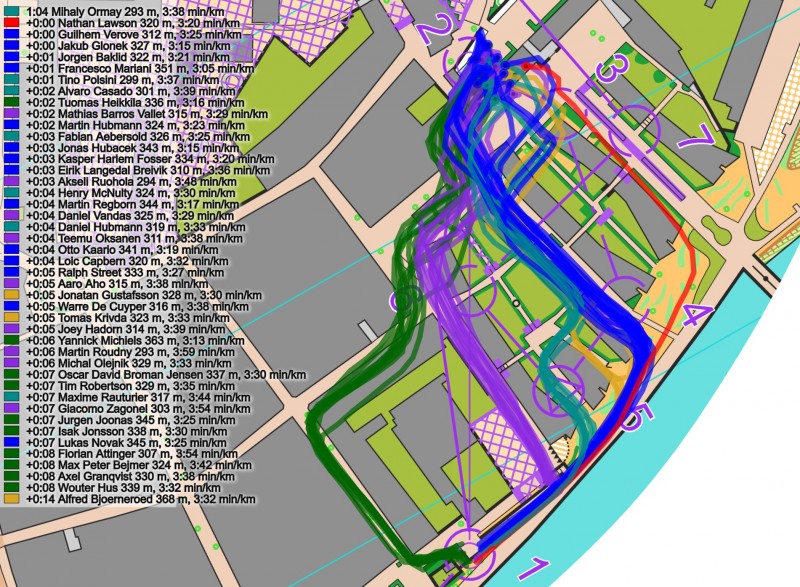
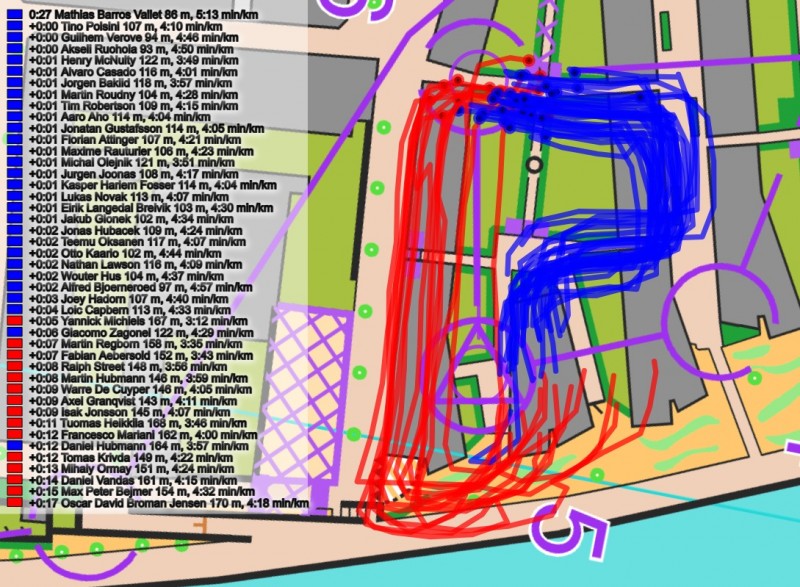
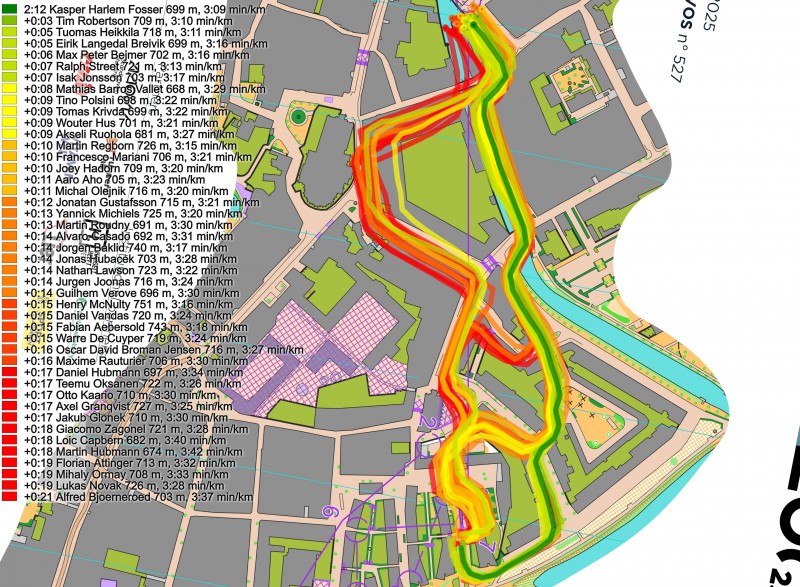
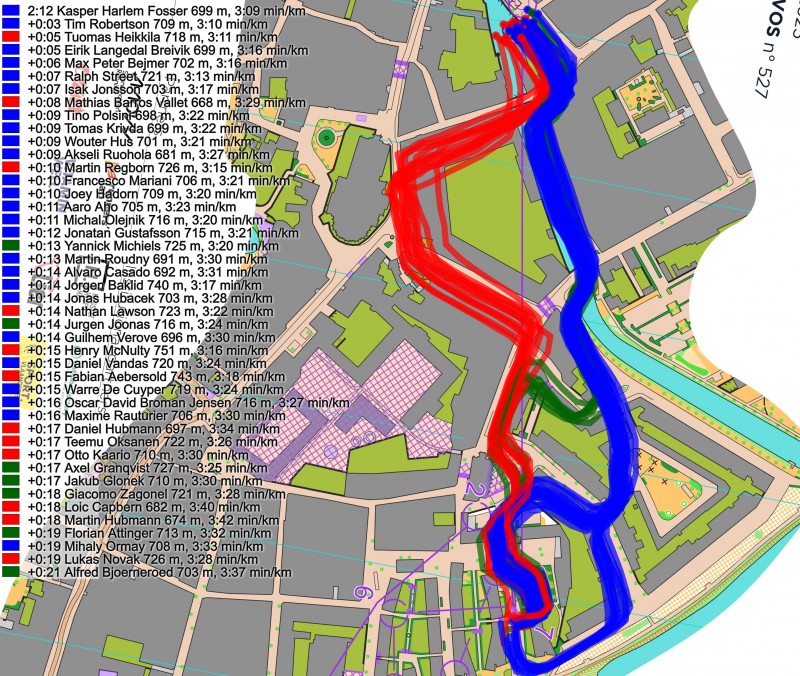
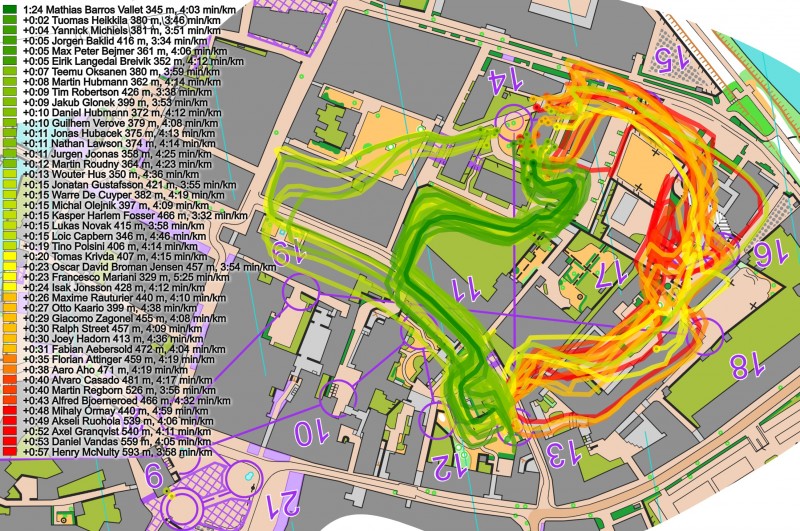
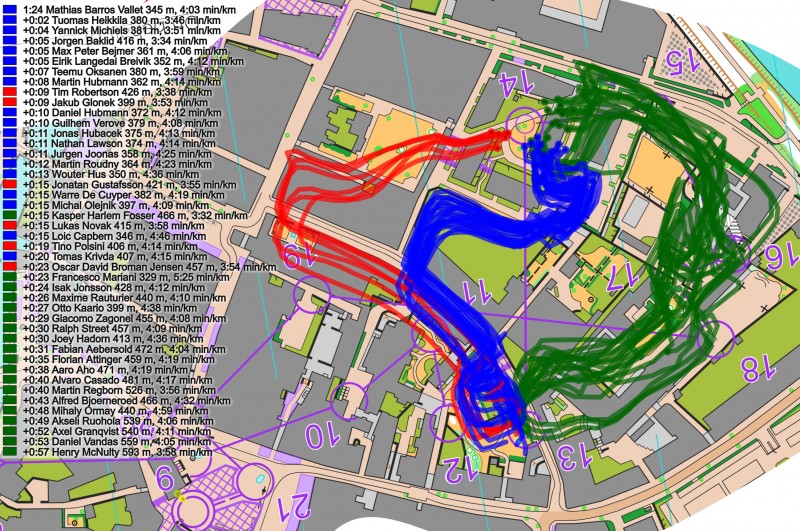
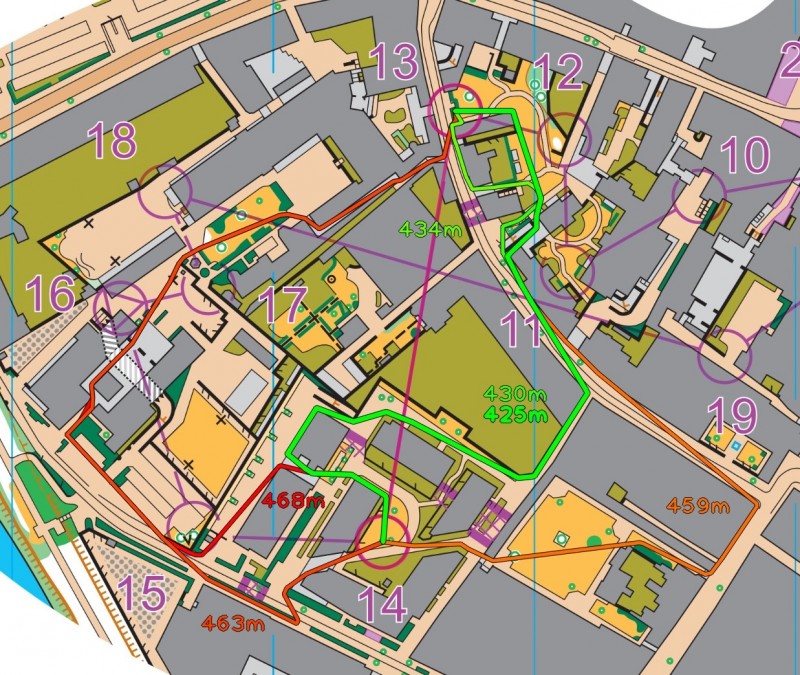
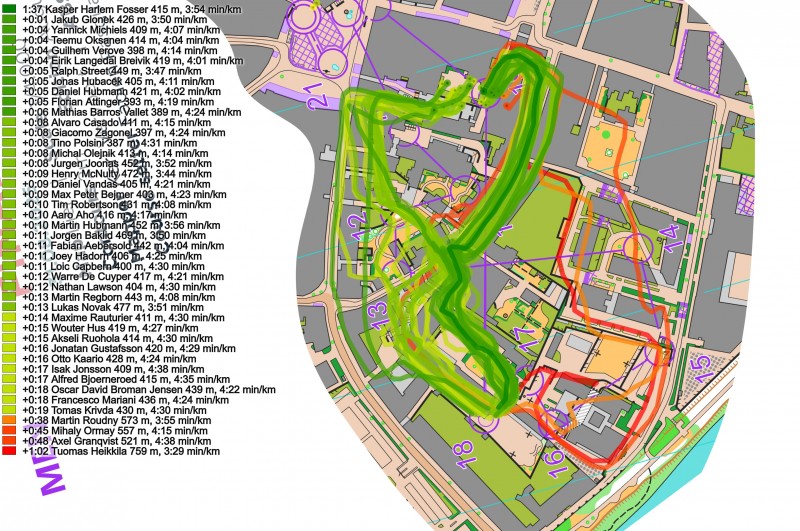
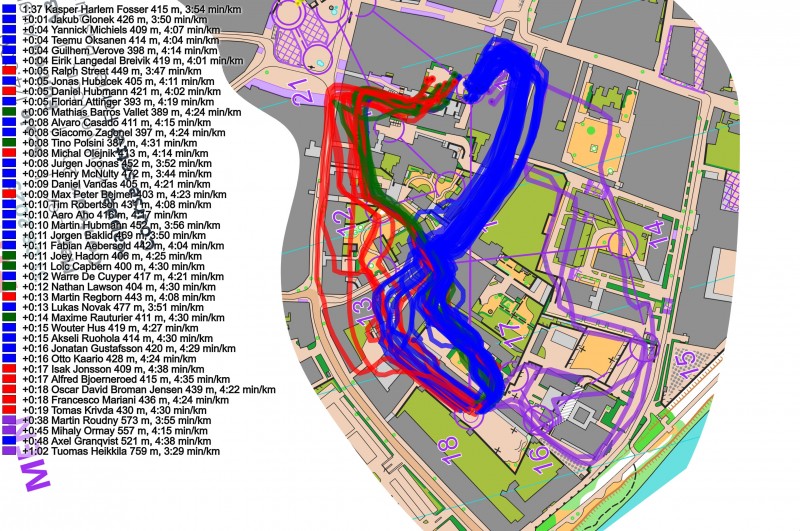

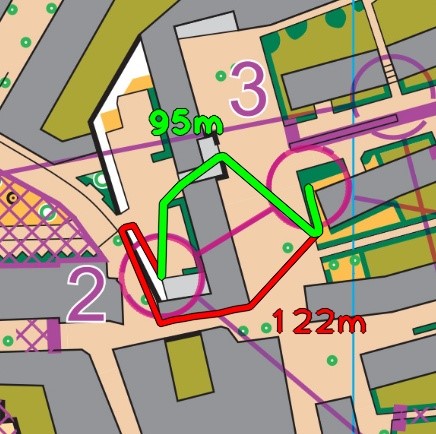
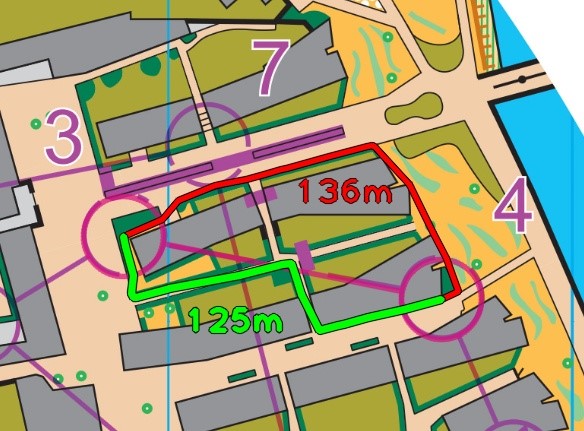
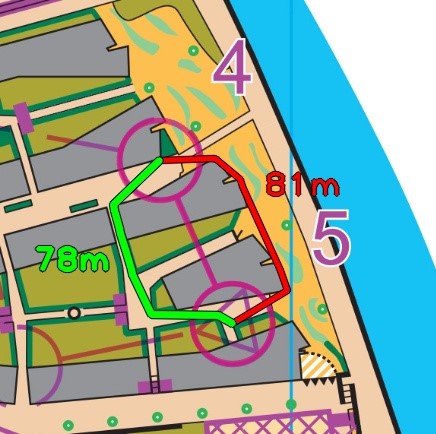
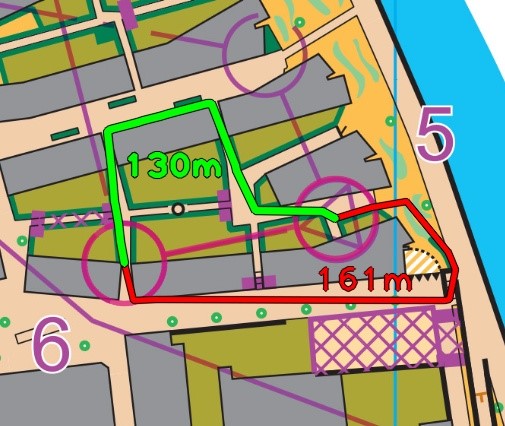
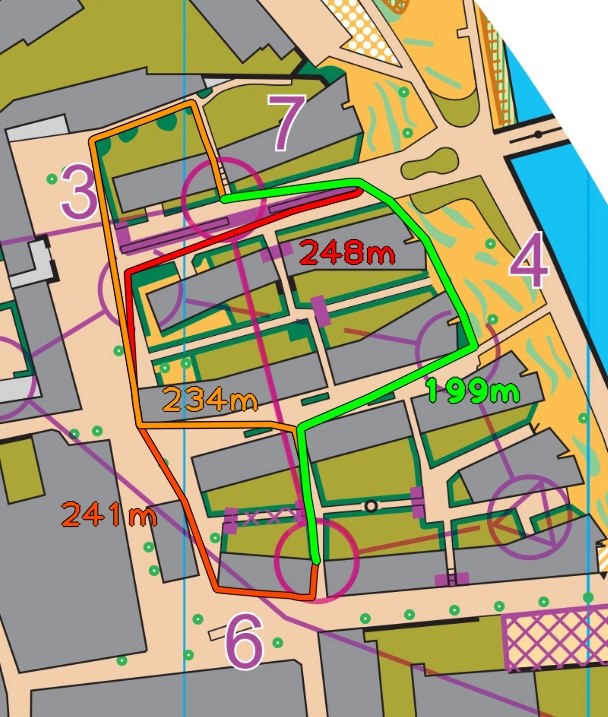
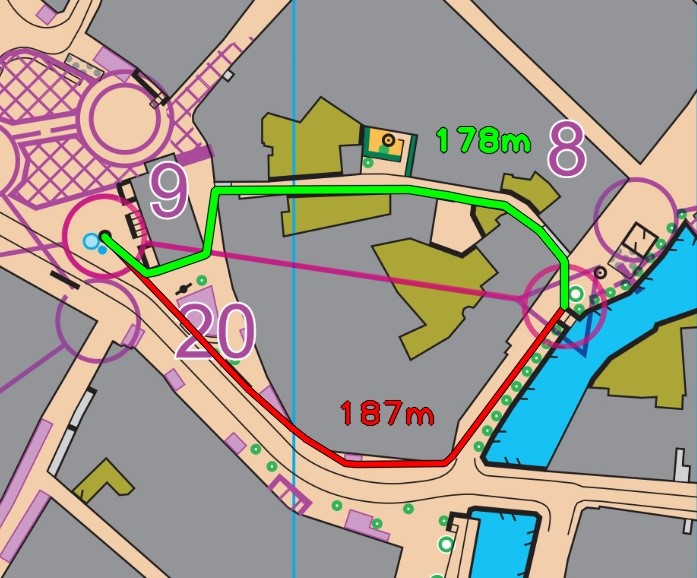
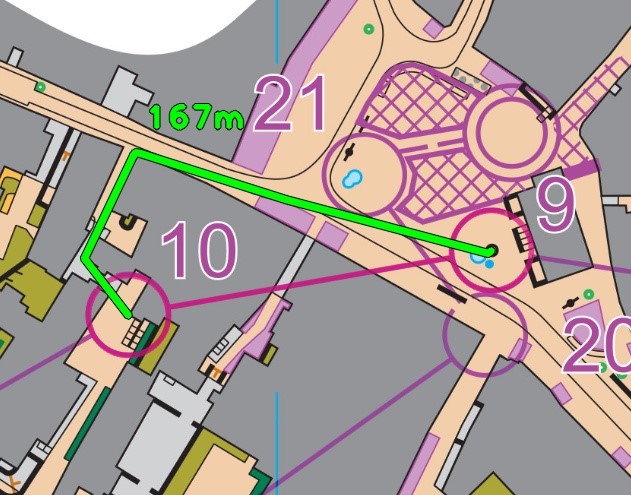
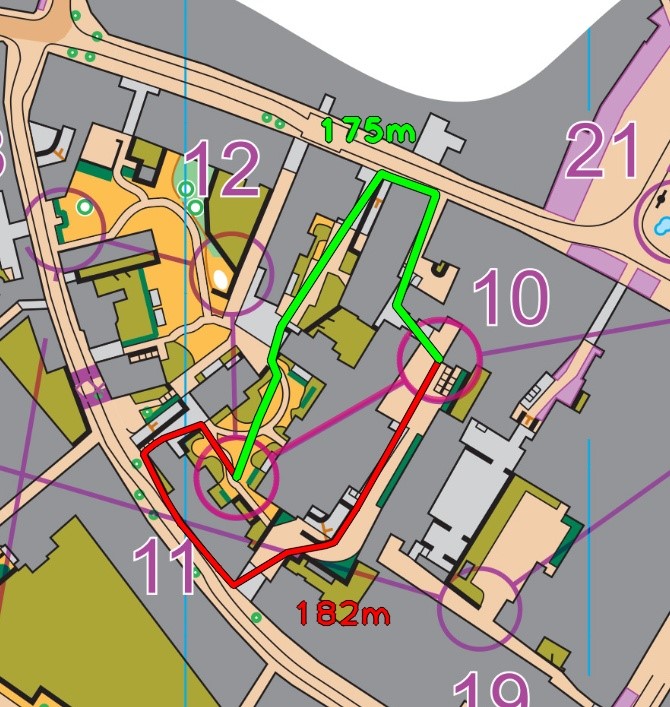


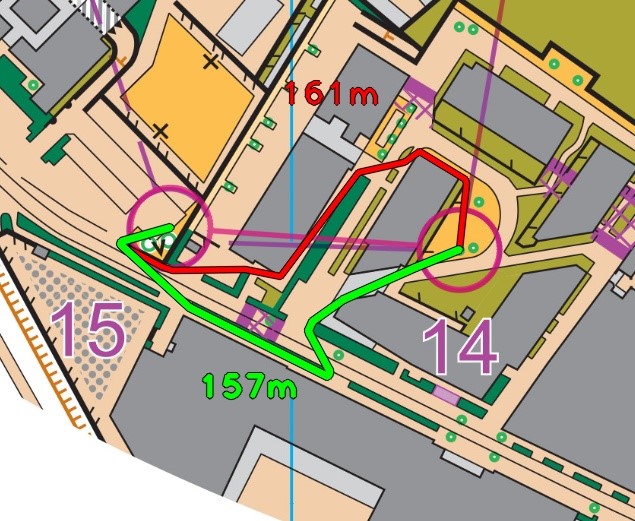
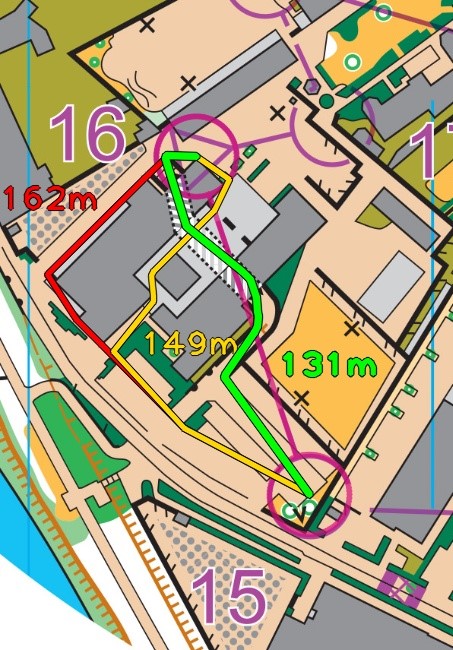

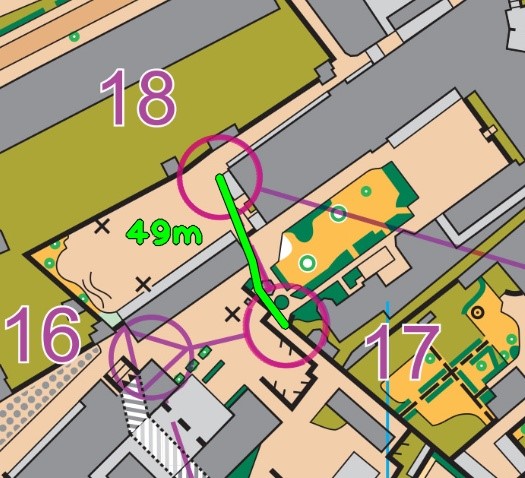
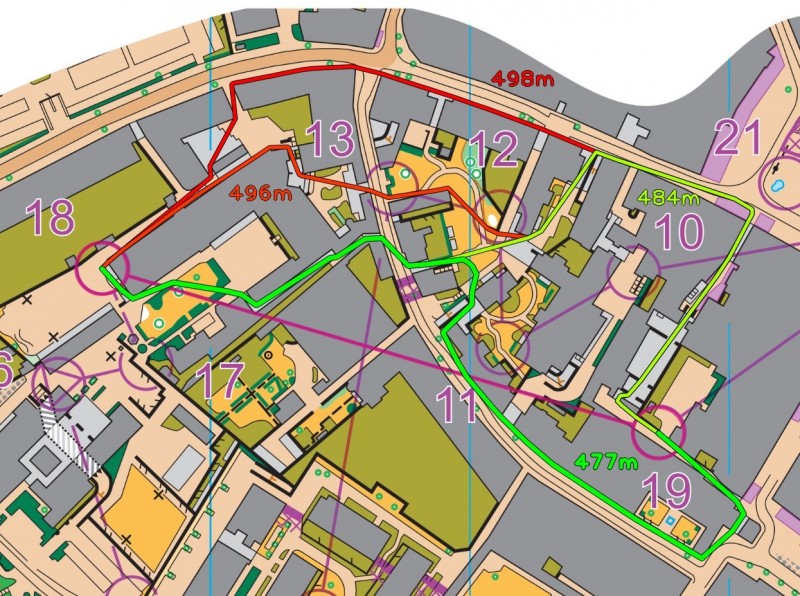
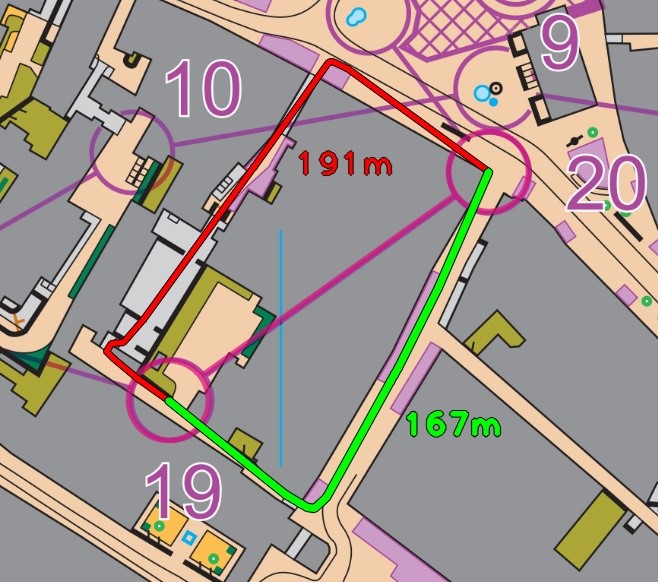
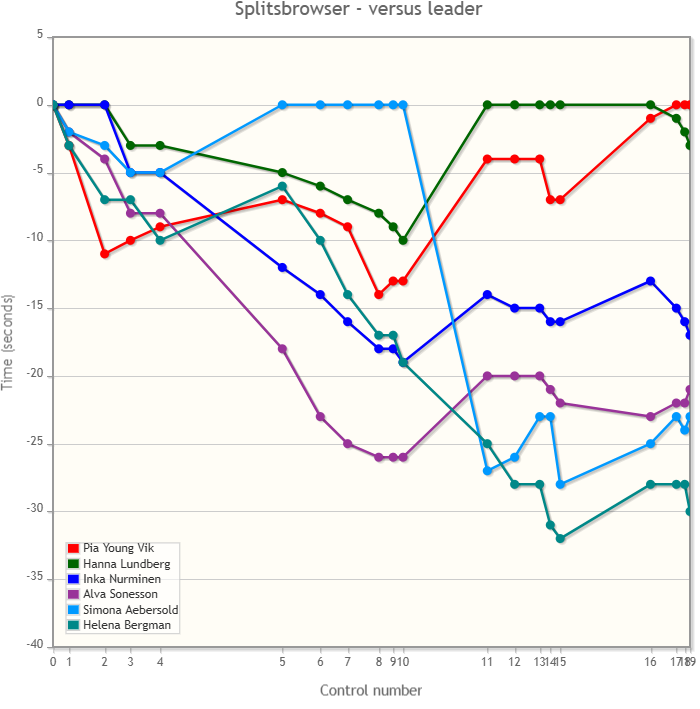
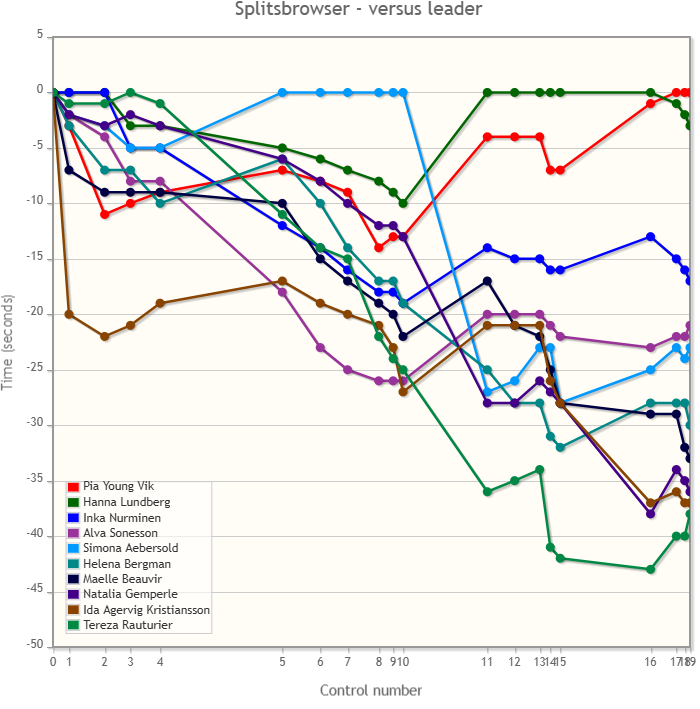
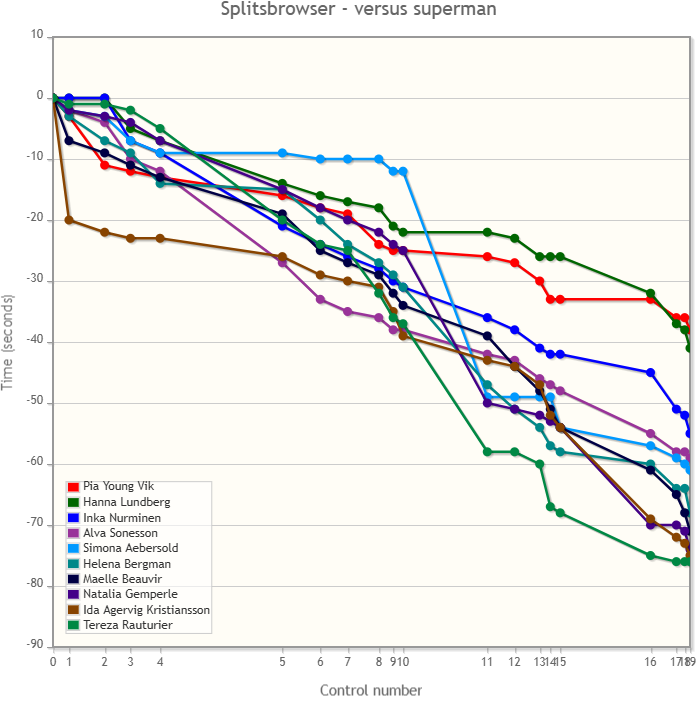

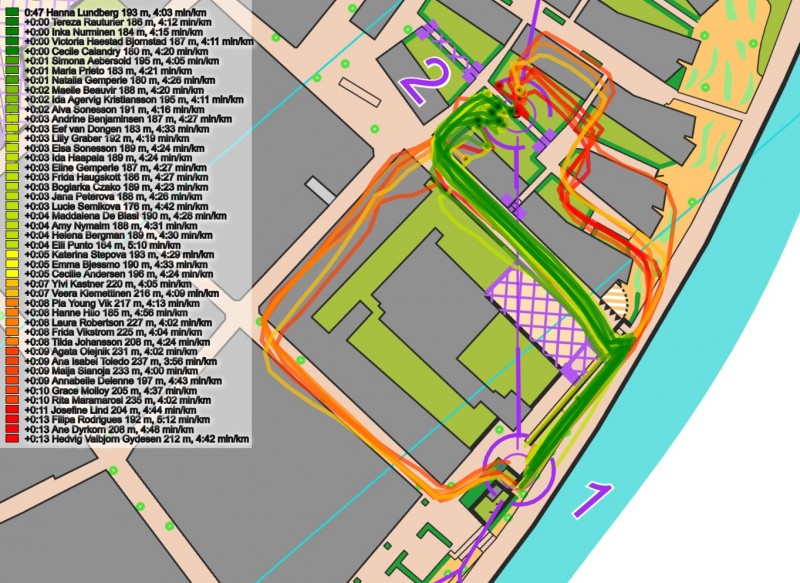
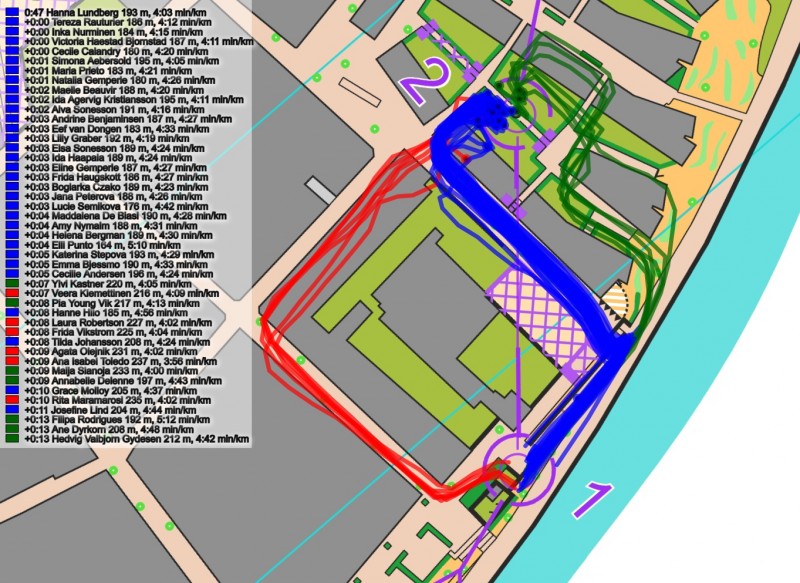
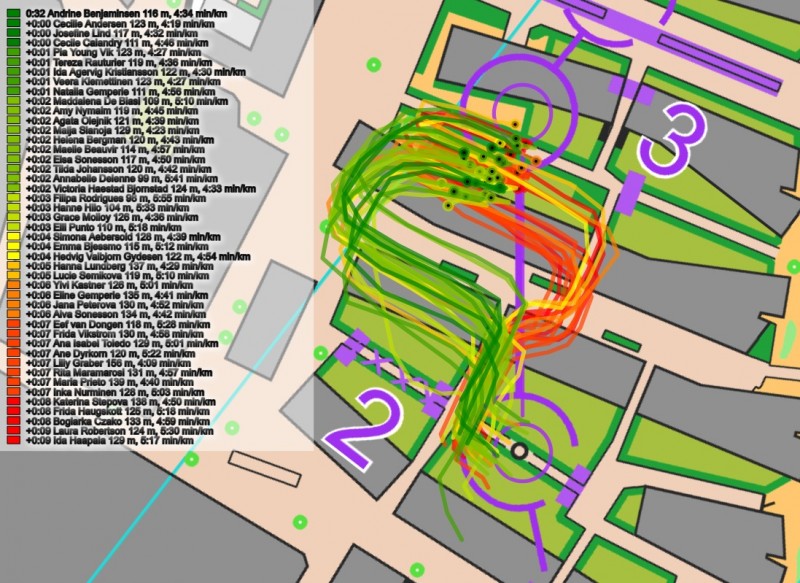
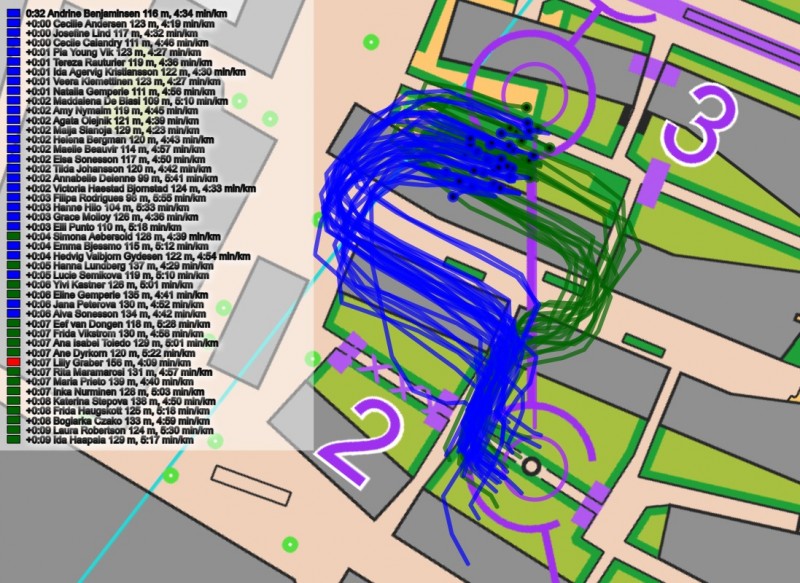
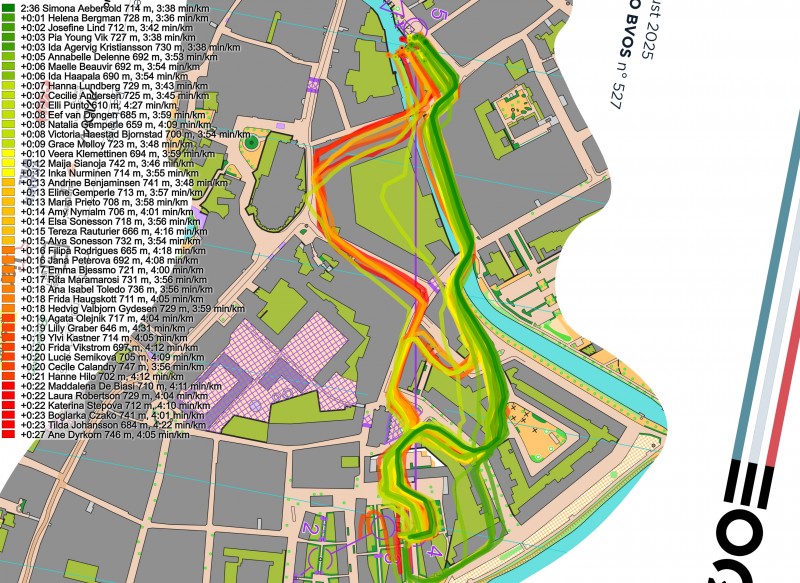
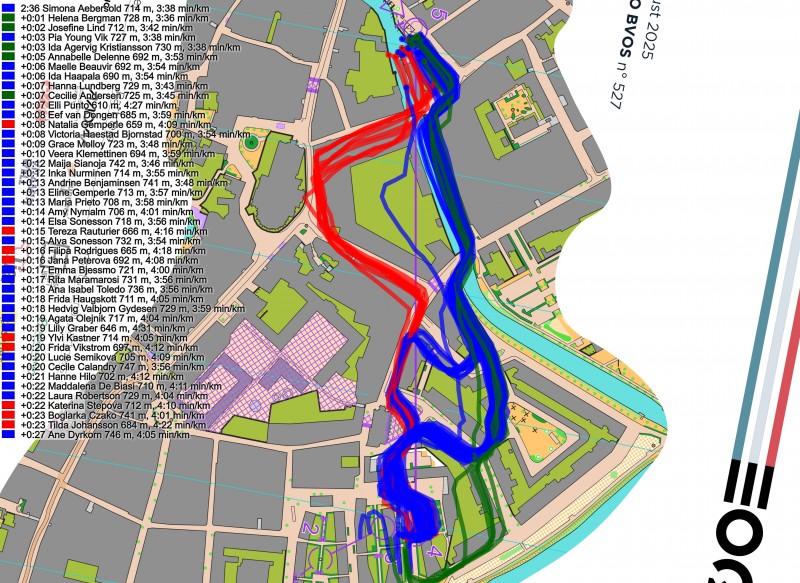
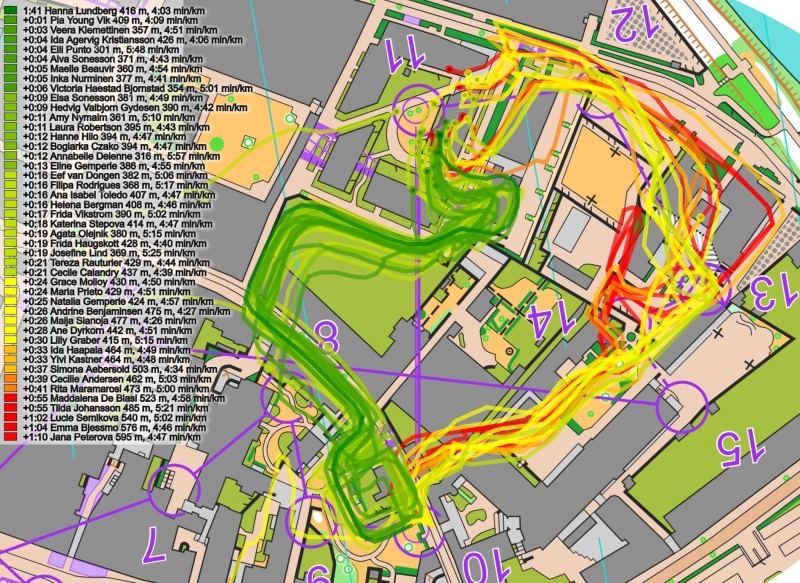
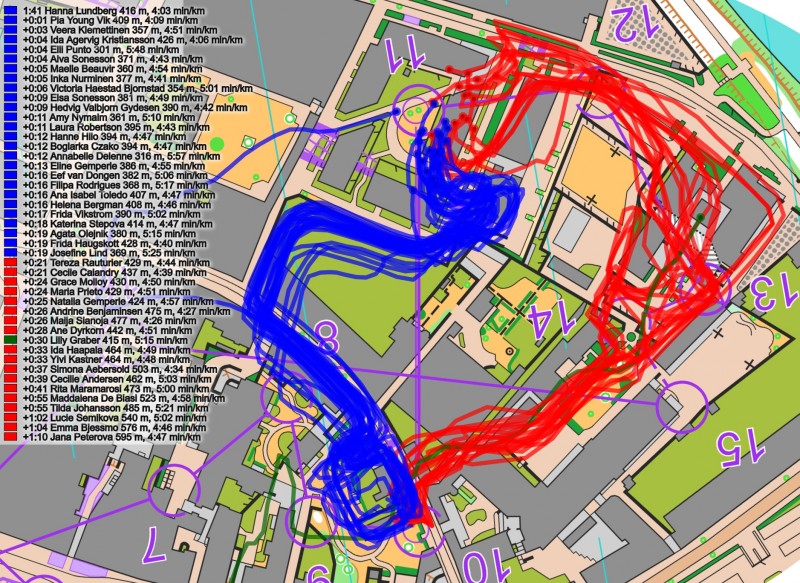
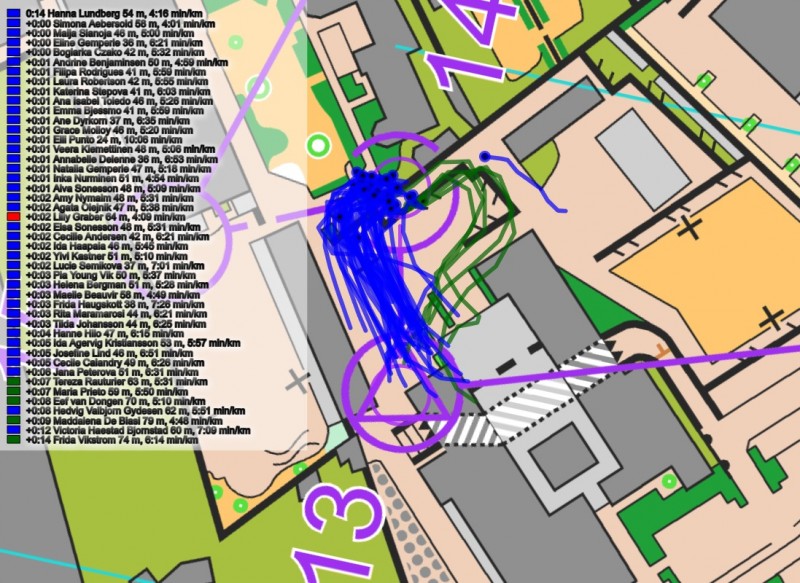

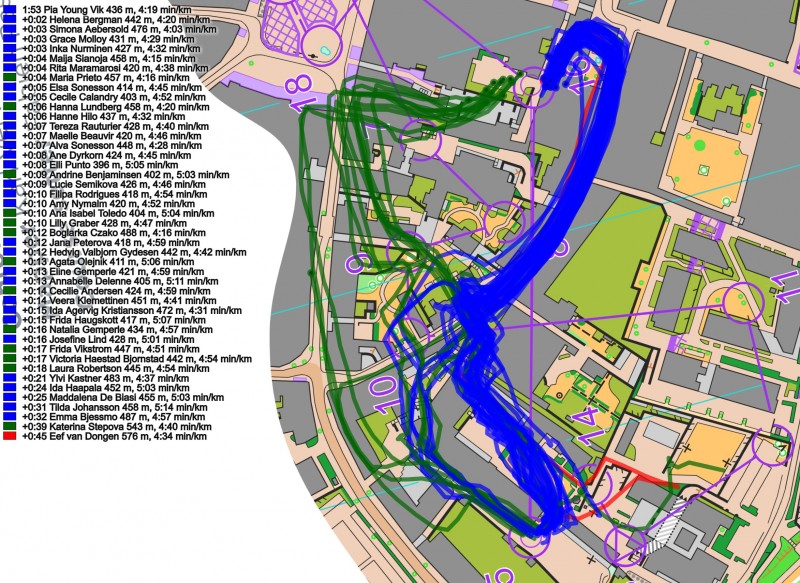

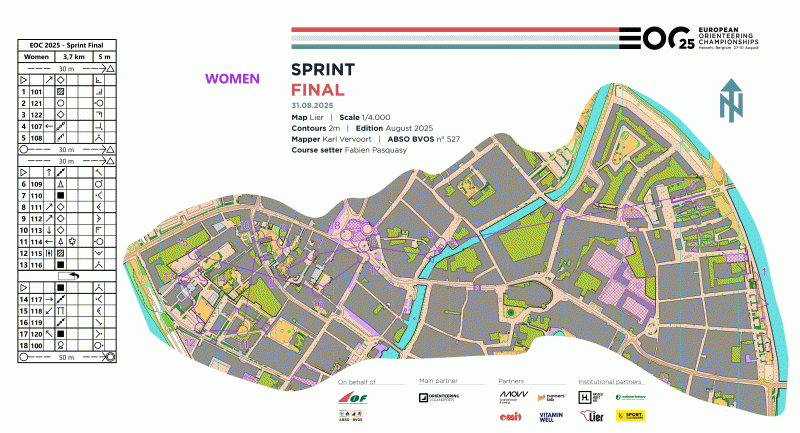

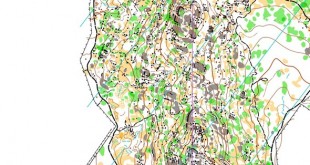
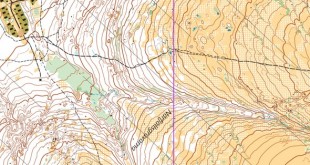
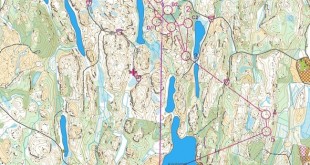

For the control 11, several women, including Aebersold and Gemperle I think, had already lost a few seconds at the start by running to the entrance of the school (where I was) before changing their mind.
And I suspect choosing that way through the school from 16 to 17 cost Lundberg the 3 seconds for the title.
@Pierre: Yes, you are probably right. She also lost a bit on running speed to the last legs based on the split times.
Brilliant analysis (as usual). And very useful de new map viewer. But the links are inter exchanged (men/women). Thanks Jan.
@Iuhou: Thanks & thanks – links now switched!